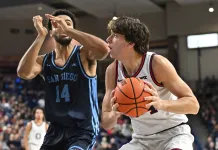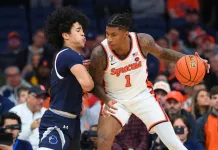With college basketball conference action set to begin for several leagues and already underway for others, let’s review some handicapping fundamentals.
The great thing about conference action is that all the teams play similar schedules. Everyone starts over, within confined parameters. Handicappers and bettors can throw out possibly polluted perceptions from pre-conference schedules that were too easy (cupcakes on parade) or too difficult (made-for-TV testers).
Some leagues play full double-round-robin rotations. Others are too big for that but still play so many games that strength of schedule within the league is extremely similar. That makes scoring margins, team stats and player stats great indicators for quality.
Believe it or not, schedule strengths usually settle within four or five games of league action. That doesn’t seem like a huge sample size. And nobody should bet irresponsibly large amounts because of what he sees in a handful of games. But observers will see the general picture come into focus that quickly, even if they have completely ignored the season to that point.
Regulars know VSiN likes to emphasize these team stat categories in college hoops: offensive and defensive efficiency (scoring adjusted for pace), turnover percentage on both sides of the floor, and rebound percentage. If you have a favorite conference, it would behoove you to log these stats on a game-by-game basis. That’s a manageable task for one or two leagues because teams typically play just two games a week.
If you’re uncomfortable with advanced analytic stats, simply using standard old-school box scores to log two-point shooting, three-point shooting, rebound differential and turnover differential will get you there. You’ll recognize team strengths and weaknesses quickly.
Should you study individual players? This is generally overrated in game broadcasts, in which announcers want to focus on star power to generate narratives. There are certainly teams on which one guy is the star. Nothing wrong with looking for that workhorse, then fading his team when he’s hurt or worn down later in the season. You’ll also learn to fade coaches who overemphasize a workhorse at the expense of building a complete team.
What about the value of home-court advantage in conference play? The market typically uses about three points. Some sharps use only 2.5 points in geographically compact leagues. Others emphasize “road-court disadvantage” more for very young travelers lacking experience.
TV broadcasts that focus on crowd size are prone to exaggerate the impact of home court. Boisterous student bodies don’t push the number much higher than 3. Empty arenas may not knock it down. Part of the advantage for hosts involves visitors’ travel fatigue and unfamiliarity with shooting backdrops.





